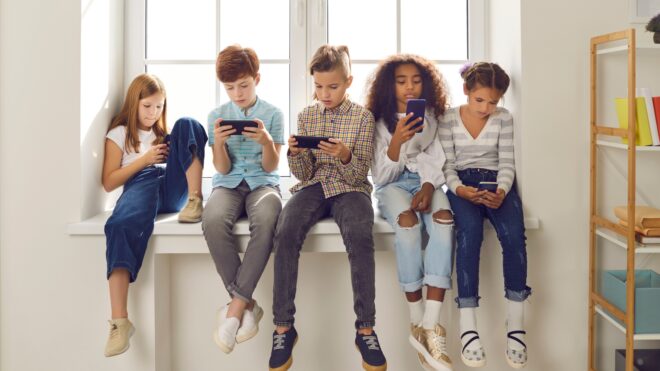
My daughter started kindergarten this year. We live in a neighborhood where there is a mix of different ethnic groups but the majority is white (around 65%). And her kindergarten class reflects that.
As the weeks went on, my daughter started making new friends. She tells me about them, their names, personalities, how they like to play together, and who their siblings are.
One day, we arrived early at school, so she met up with her friends. She ran up to them and they gathered in a circle, standing with their jumbo backpacks and bright-colored rain boots. The bell rang and the kids started lining up to go to class.
That’s when I noticed that there are three Asian girls in her class. My daughter is one of them and she’s friends with the other two. Her group of friends is as diverse as the rainbow despite her class being predominately white.
Is it a coincidence that she gravitates toward friends of different ethnic backgrounds?
It made me think about my circle of friends and how most of my close friends are also visible minorities. Why is that?
I was born and raised in Canada, and growing up, I had friends from all cultures. The ones I felt the closest and could relate to the most, however, were those who were also Asian Canadian.
As a kid, striking up a conversation with someone who also looked different seemed less intimidating. And as the friendships grew, it was nice to connect with those who shared the struggles of having two identities. From speaking a different language and eating different food at home to not looking like the actors and actresses we saw on movies and television, we had common experiences that created a camaraderie.
I remember when I was in sixth grade, I went over to a South Asian friend’s house and her parents made samosas for our snack.
It was my first time trying them, and they were delicious. However, she never brought them to school for lunch. I only saw her eat sandwiches.
So I asked her why. She told me that her parents were afraid she would get picked on for bringing weird food for lunch. I shared with her about the time I brought noodles to school and how kids made fun of me because they thought I was eating worms. She empathized with me.
Then she told me a story about how when they first immigrated here, her dad brought curry to work; unfortunately, he had to stop because his coworkers put up a sign on the microwave in the lunchroom that said “Please do not heat smelly foods like curry.” And that’s when her family started buying white bread and bologna.
We bonded over our stories. Although we have very different backgrounds, there was a sense of familiarity and comfort that made it feel like we belonged in our own little bubble.
As I got older, making friends was less about what we brought for lunch and more about feeling the need to fit in.
It was more about connecting on an emotional level. I felt less vulnerable talking to someone who shared Eastern values and beliefs but was brought up in Western society.
There’s a mutual understanding that they would resonate with experiences such as dealing with immigrant parents, facing discrimination, and internally battling between choosing family expectations and the need for individual identity and expression.
Lastly, having multicultural friends allowed me to feel more positively about my ethnicity. I have friends who immigrated to Canada as adults. Getting to know their journey has empowered me to learn more about my roots and history. Through that self-discovery, I’ve grown to be proud of where I came from, to love myself from the inside out, and to be eternally grateful to live in a democratic country full of opportunities.
So when I asked my daughter why she chose to be friends with her friends, she responded, “Because they’re kind, nice and funny.”
And those are really the reasons we become friends with anyone.




